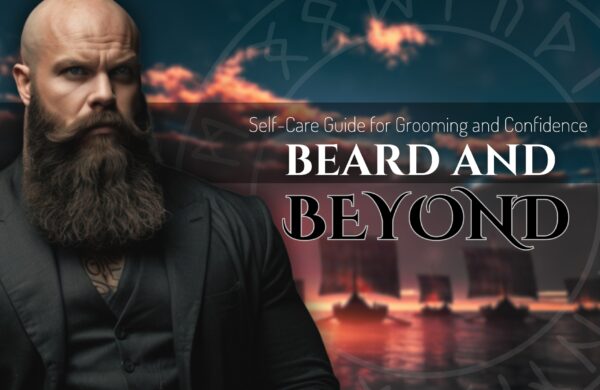In today’s fast-paced world, balancing work, relationships, and personal goals can push many men to the brink of exhaustion. Often, “taking a break” is perceived as a luxury rather than a necessity. However, incorporating stress-relieving hobbies for busy men into daily or weekly routines has proven benefits for mental, emotional, and even physical health. Whether you have 15 spare minutes a day or one free afternoon a week, the right hobby can significantly reduce stress levels and cultivate a healthier mindset.
In this comprehensive guide, we’ll explore the importance of hobbies in combatting stress, provide a range of accessible options, and present images with SEO-optimized captions that illustrate how these stress-relieving activities can seamlessly fit into a hectic schedule.
Why Men Need Stress-Relieving Hobbies
The Modern Work Environment and Its Challenges
Modern workplaces demand constant connectivity and high performance. Emails, conference calls, and project deadlines can create an “always-on” mentality that leaves little mental breathing room. This constant pressure often spills over into personal life, exacerbating relationship tensions and interfering with restful sleep.
Hidden Consequences of Chronic Stress
Unchecked stress doesn’t just affect mental health; it can also take a toll on physical well-being. Research suggests chronic stress can elevate cortisol levels, increasing the risk of hypertension, heart disease, and immune system dysfunction. It can also trigger emotional eating, insomnia, or reliance on harmful coping mechanisms like excessive drinking.
How Hobbies Break the Cycle
Stress-relieving hobbies for busy men serve as a counterweight to life’s demands. They create mental and emotional “space” for self-expression, social engagement, or mindfulness. By dedicating even a small fraction of your day to an enjoyable pursuit, you tap into a sense of fulfillment and autonomy that can significantly lower stress and improve resilience.
Types of Hobbies to Consider
Men’s hobbies come in various forms, ranging from deeply contemplative to energetically active. The key is to choose an activity that resonates with your interests and lifestyle. Below are four broad categories to guide your exploration.
A. Mindfulness and Relaxation Hobbies
- Meditation and Breathing Exercises
- Why it Works: Meditation cultivates present-moment awareness, which reduces negative thought loops. Even brief daily sessions—like 5 minutes before starting work—can lower anxiety.
- How to Start: Consider apps such as Headspace or Calm, or watch guided videos online. Begin with short intervals and slowly increase as your comfort grows.
- Yoga
- Why it Works: This low-impact exercise improves flexibility, posture, and mental clarity. It combines structured breathing and mindful movement, promoting relaxation and stress reduction.
- How to Start: Local studios often offer beginner-friendly classes. Alternatively, follow Yoga with Adriene for free online lessons tailored to different skill levels and goals.
- Aromatherapy and Essential Oils
- Why it Works: Certain scents—like lavender, bergamot, and chamomile—are widely recognized for their calming properties.
- How to Start: Diffuse essential oils in a home office, bedroom, or living room. Many essential oils can also be used in a warm bath or applied in diluted form for a calming self-massage.
(Pro Tip: Combine yoga with aromatherapy by diffusing soothing oils during your stretching routine.)
Physical Activities and Quick Workouts
- Short HIIT Routines
- Why it Works: High-Intensity Interval Training (HIIT) delivers maximum cardiovascular benefits in minimal time (often 15–20 minutes).
- How to Start: Look for beginner-friendly HIIT workouts on YouTube. Popular channels often provide modifications for different fitness levels.
- Indoor or Home Workouts
- Why it Works: Quick bodyweight exercises—like push-ups, squats, and planks—stimulate muscle growth, improve circulation, and release mood-boosting endorphins.
- How to Start: Create a “gym corner” in your living space with minimal equipment such as resistance bands and a yoga mat. Even 10-minute bursts throughout the day can yield noticeable benefits.
- Team Sports on Weekends
- Why it Works: Sports like basketball, soccer, or tennis offer the dual advantage of physical exertion and social interaction. This combination can alleviate loneliness and stress simultaneously.
- How to Start: Join a local recreational league or organize a weekly sports meetup with friends or coworkers.
(Pro Tip: Keep a gym bag or sports gear in your car to eliminate the barrier of “not having the right equipment” when an opportunity arises.)
Creative Outlets for Expression
- Writing and Journaling
- Why it Works: Putting thoughts on paper can help men process emotions, clarify goals, and reduce mental clutter.
- How to Start: A simple notebook or journaling app suffices. Dedicate at least 5–10 minutes before bedtime or upon waking.
- Drawing or Painting
- Why it Works: Engaging with visual art stimulates the brain’s creativity centers. It offers a tactile, hands-on way to express stress or discover a new artistic talent.
- How to Start: Experiment with basic sketching exercises or watercolors. Online tutorial platforms like Skillshare can provide structured lessons.
- Music and Instrument Practice
- Why it Works: Playing or learning an instrument can be both meditative and emotionally expressive. Music therapy principles indicate that rhythm and melody can greatly reduce stress.
- How to Start: Select an instrument you’ve always been intrigued by—guitar, piano, ukulele—and practice in short, consistent sessions. Track progress with apps or record yourself to monitor improvement.
(Pro Tip: Combine creative hobbies with time-blocking. For instance, set a 20-minute timer after dinner for journaling or guitar practice.)
Social and Community-Based Activities
- Volunteering
- Why it Works: Helping others fosters gratitude and perspective, which can naturally reduce personal stress.
- How to Start: Contact local charities, animal shelters, or community centers. Even a few hours a month can generate a profound sense of purpose.
- Meetup Groups and Workshops
- Why it Works: Sharing a common interest—like photography, coding, or hiking—builds friendships and a supportive network. Social engagement is key to emotional health.
- How to Start: Use Meetup or social media event listings to find local hobby groups. Attend events sporadically at first to gauge your comfort level and interest.
- Outdoor Retreats or Camping
- Why it Works: Nature immersion is linked to reduced stress and anxiety. Unplugging from technology and immersing in fresh air can offer a mental “reset.”
- How to Start: Begin with day hikes in local parks. Progress to simple overnight camping trips once comfortable with gear and basic outdoor safety.
(Pro Tip: Pair volunteering with social hobbies—like a weekend litter cleanup that doubles as a group hike. You’ll get exercise, help the community, and connect with like-minded individuals.)
How to Get Started Despite a Busy Schedule
1. Micro-Scheduling
Break your chosen hobby into five or ten-minute increments. If you have time for an extended session, that’s great—but the key is consistency rather than duration.
2. Batching
Combine compatible tasks. For example, if you pick up groceries near a park, allocate 15 minutes for a brisk walk or quick meditation among the trees before you drive home.
3. Accountability Partners
Sharing a hobby with a friend or coworker can turn a personal goal into a shared experience. This mutual support reduces the temptation to skip sessions because “it’s just me.”
4. Adjust Your Mindset
Reframe hobbies as an investment in long-term health. Just as work responsibilities deserve unwavering attention, so do the activities that keep you mentally grounded and physically resilient.
(Pro Tip: Set up small rewards for meeting milestone goals—like treating yourself to a new journal or piece of sports equipment after consistently practicing for a month.)
Conclusion
Men often carry multiple roles—provider, problem-solver, mentor, and friend—each of which can contribute to accumulated stress. Integrating stress-relieving hobbies for busy men is a manageable, yet profoundly effective, strategy for preventing burnout, fostering emotional resilience, and nurturing overall health. From short bouts of meditation to interactive group sports or creative exploration, there’s a hobby to suit every schedule and preference.
Action Step: Select one new hobby or activity from this list that resonates with your interests. Allocate a non-negotiable time slot—whether it’s 10 minutes a day or an hour on weekends—and commit to it for the next month. Document how you feel before and after each session. This simple mindfulness of your well-being can guide you in fine-tuning your hobby for maximum stress relief and enjoyment.



